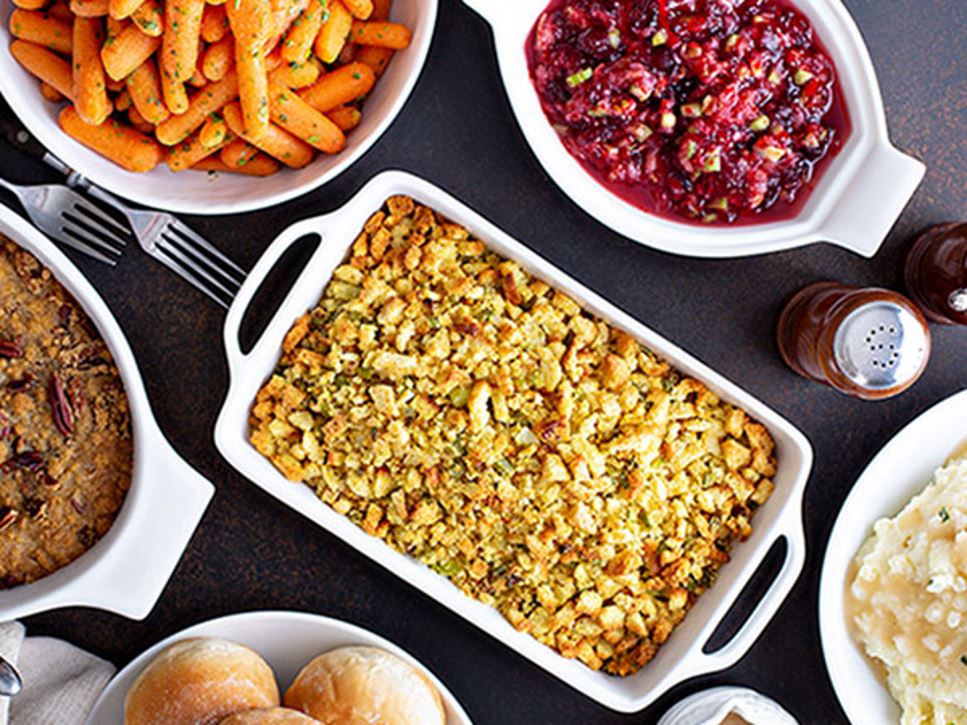Whether you call it stuffing or dressing, a holiday meal doesn't seem complete without it. Stuffing provides that special, comforting and memorable component to the meal. Not everyone agrees on the exact ingredients that go into the perfect stuffing. However, everyone does agree that stuffing needs to be prepared safely so your holiday doesn't provide vivid stories of food poisoning.
The Basics of Stuffing Preparation
To prepare stuffing safely and help ensure only fond food memories result, proper planning is key. First, determine how much stuffing you need. When serving individual-sized portions, like boneless chicken breasts, pork chops or other entrees, plan for about ½ cup of prepared stuffing per serving. If stuffing whole poultry, plan for about ½ to 1 cup of prepared stuffing per pound of uncooked poultry.
Also, you'll need a food thermometer for determining when stuffing is safely cooked to a minimum internal temperature of 165°F. Use this temperature as a guide, whether you serve stuffing separately in a casserole dish or stuffed into poultry or meat. Bacteria can survive and thrive in stuffing that hasn't reached this temperature, increasing your risk of food poisoning. While it may be traditional to cook stuffing inside of poultry or meat, it can take longer for it to reach the appropriate temperature. For maximum safety, consider cooking stuffing in a separate dish.
Stuffing Preparation: Do's and Don'ts
Once your meal is planned and your ingredients and food thermometer are ready, deliciousness awaits. Follow these tips to help ensure you and your loved ones safely enjoy the succulence of stuffing.
- As soon as you've prepped the stuffing, cook it immediately. If you prefer to prep stuffing in advance, freeze rather than refrigerate the uncooked mixture.
- When stuffing the large cavity of fresh or thawed whole poultry, use a moist stuffing mixture rather than a dry one. Spoon it loosely into the cavity to allow for proper cooking. Although it may be tempting, avoid over-stuffing the bird.
- For stuffing recipes that include poultry, shellfish or meat, cook these raw ingredients before adding them into the stuffing.
- After the inner part of the stuffed poultry thigh and the center of the stuffing have reached 165°F, let the cooked poultry stand for 20 minutes to complete the cooking process; then remove the stuffing and carve the poultry.
- Refrigerate any leftover foods that are perishable within two hours.
- If you have leftover stuffing cooked within the poultry cavity, store the stuffing in a separate, sealed container. You don’t need to remove the stuffing from smaller cuts of meat, like pork chops or single portion cuts of meat. Stuffing may be refrigerated for up to three or four days, or frozen for longer storage. The same timing applies for stuffing that is cooked separately, too.
- Be sure to reheat any leftover stuffing and use a food thermometer to make sure it reaches 165°F before eating it.
References
Find a Nutrition Expert
Looking for credible nutrition information and recommendations? The Academy of Nutrition and Dietetics' network of credentialed food and nutrition practitioners are ready to help!

